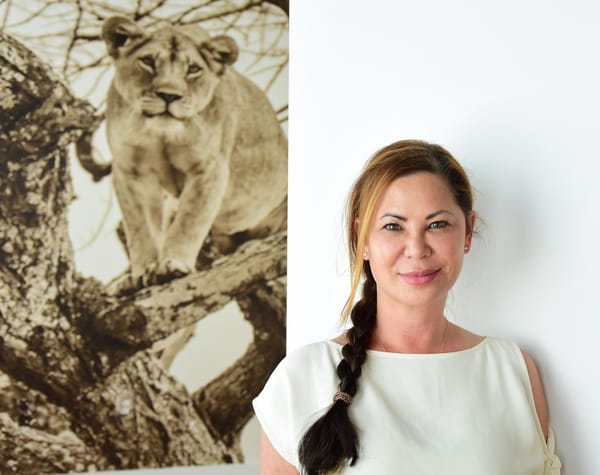PRINT BOOM IN WOODSY, MYSTERIOUS CORNER OF THE BERKSHIRES

A local arsonist who got out of prison and hangs out at everyone’s favorite bar. The raging, no-one-didn’t-believe-it rumor that Brad and Angelina were building a house, and a helipad, on a deserted road here. A police raid on the state’s largest-ever marijuana-growing hothouse. A suicide in a skinny-dippers’ lake. For a town that even frequent Berkshires visitors have never heard of, Sandisfield, Massachusetts—geographically ginornous (53 square miles) yet almost pointilismically underpopulated (786 fulltime residents), and uniquely diverse (celebrity fashion designers live two doors down from survivalists; old Civil Rights Era warriors near tea-party types)—has harbored scintillating news, and gossip, in recent years: all whispered word of mouth. Which is fitting, since Sandisfield has always been where people have come to hide. (In the McCarthy 1950s, Julius and Ethel Rosenberg were tucked away in a home in its woods before they were dragged out and executed.) But: Sandisfield is hiding no more! Websites schwebsites (present company excluded), the town is publishing an actual newspaper, The Sandisfield Times, that is making its residents into citizen-journalists (albeit of milder newsfare than the above). What’s more, it’s successful—the inaugural, April, issue was 8 pages; the May issue’s shot to 16—and on a donations-only shoestring, so far without advertising. The Sandisfield Times's editor Simon Winchester (author of The Professor and the Madman, Krakatoa and next fall’s Atlantic: The Biography of an Ocean), photo editor Setsuko Winchester (a former NPR producer) and designer Tina Sotis (a gifted painter) sat down at the Winchesters’ Colonial /Federal farmhouse on a recent damp spring Sunday to talk to part-time Sandisfield neighbor Sheila Weller, author of Girls Like Us, who, along with her husband John Kelly, author of The Great Mortality, will also be writing for the paper. SHEILA: So: When and where was The Sandisfield Times born? SIMON: At a smallish dinner party at Liana’s house back in December. [Liana Toscanini—development director of the Great Barrington-based nonprofit Community Access to the Arts (CATA); former owner of the Great Barrington linen store LT HOME; and great-granddaughter of Arturo Toscanini—is widely considered Sandisfield’s social and civic connector. When she moved here from New York City in the mid-‘90s, by dint of her enthusiasm and hard work, the town started gelling as a real community.] We were talking about: wouldn’t it be nice to start a paper? (Setsuko and I had—just coincidentally—taken letter-press printing classes, and we had a small press. We very naively I thought it would be nice to do this on the letter press. That idea that went out the door about 36 hours later.) We were bemoaning the fact that there is no sense of community in this little town—it’s not like New Marlborough [with its town center]. SETSUKO: Or Monterey, with its general store with the post office on one side and the library on the other. TINA: We basically wanted to do a newspaper that was a written version of a village green. SHEILA: But there is SARC [the Sandisfield Arts Center, a 19th century Baptist church turned early 20th century Jewish synagogue, which has been completely refurbished by community volunteers as a site for musical performance, talks, and films.] SIMON: The Arts Center does its best to foster a sense of community, but succeeds only up to a point. It tries, but it doesn’t really succeed in reaching out to a large portion of the population. But the newspaper—in theory—everyone will get it. Our first issue was mailed to every person on the town’s tax and voting rolls. This is not an engaged and committed village, and we started the newspaper so it would become one. We make a point, in the lead story of the May issue [“ELECTION! And the Nominees Are…”] about the local elections, of saying that only 190 Sandisfield residents voted in the last [May 2009] local election. The article opened: “Fifty-four percent of Americans voted in the last election. A healthy turnout, by any standard. But here in Sandisfield the figure for our last town election was just a measly 33 percent.” Still, the paper doesn’t scold. In fact, it’s almost Oprah-ly uplifting. That same front page features a profile—“Dolores, Our Human Tornado” by Rita Kasky—calling town clerk Dolores Harasyko “ seemingly indispensable and indestructible.” (And, man, is she ever that. Three years ago, when a mystery investor threatened to open a dirt-bike-racing track in town—across from our house, in fact – and everyone was panicked and outraged, Dolores was the voice of calm authority. The deal was speedily aborted.)

TINA: People are just so grateful to see a paper in the town again. The Sandisfield Newsletter did a very good service, but it folded several years ago. SETSUKO: As picture editor, I’m trying to get people to take pictures of things in town that interest them. We’re trying to get people who aren’t writers to write about what interests them. Susie Crofut [longtime Sandisfield resident and widow of renowned folksinger Bill Crofut] loves to garden, so she wrote “Black Flies? No Like-Um.” SIMON: Adam Manacher, who has a house across the road from us, is a chef in Boston, I said, “Why can’t we conceive a piece where you come up with a recipe based on things only from Sandisfield sources. So we’re calling his section “Edible Sandisfield.” Then there’s Mick Burns. TINA: Mick is my neighbor in the woods. He’s a Renaissance Man. A cabinetmaker, he makes his own beer, he knits, he makes maple syrup, he’s building a house, some parts are recycled material from an old barn. SETSUKO: He makes his own pizza from scratch using a giant sandstone wood stove that goes from cellar to roof that has two ovens that he built himself. TINA: He always wanted to be a writer, and he has the most extraordinary stories of adventures with wildlife. So he wrote this wonderful story [for a forthcoming issue] about how he started beekeeping but all his bees died over the winter. It made me cry! SIMON: Then there are two women, Albanian refugees, who have a diner, Villa Mia, on Route 8. So we’re thinking of a future article “From the Balkans to the Berkshires.” TINA: Simon is a great headline writer. “Dolores Our Human Tornado” was his idea. And the section on births, marriages, and deaths will be called… SIMON: “Hatched, Matched, and Dispatched.” Everyone laughs.SHEILA: Well, that does say it. SIMON: We’re looking for someone to be the Agony Aunt—the lovelorn columnist. Sheila…? SHEILA: Hmm. While I’m never shy about giving it, I’ll have to ask some of the people who’ve actually taken my advice to see if you’d be safe with me. We don’t want any lawsuits. Anyway, how is this endeavor—Pinch Sulzberger, watch your back—being bankrolled? SETSUKO: From donations. [LIANA TOSCANANI, by e-mail: We raised over $1,000 before it was published and nearly another $1,000 these past few weeks.] SIMON: I went on the BBC talking about it, and we got subscription requests from Ireland and Australia. TINA: We got a $750 grant from the Sandisfield Cultural Council. We print it at Kwik-Print. It costs $575 to print 1,000 copies. [LIANA, by e-mail: Advertising will be our backup plan to funding an increasingly larger and/or more popular paper requiring more pages and larger print quantity than the 1000 copies we currently produce.] SHEILA: What are the other reasons for the no-ads policy you have for now? TINA: Well, ads add to the number of pages. And they require people committed to soliciting for ads. Also, there are [longstanding] newsletters of adjacent town—The Otis Gazette, The Monterey News—that have loyal advertisers, and how far can a business stretch its advertising dollar? Finally, I would probably have to spend a lot of time designing ads as well as the paper. SETSUKO: And Tina donates all her time as it is. We don’t want to overload her. The talk turns to all the great Sandisfield lore: the Brad-and-Angelina “certainty” (heck, I was all set to try to rent our house out to People magazine). The ex-con arsonist. The man who resided in the town dump. The chatty, charming young Nashville couple who lived down John’s and my road and who vanished almost overnight (incinerating the furniture they couldn’t fit in their U-Haul), whom everyone suspected were in the Witness Protection Program. And there was not just that one marijuana hot-house bust, but, more recently, a second secret weed factory whose grow lights caught fire one night, burning the whole house down. (Where is Mary Louise Parker when you need her?)TINA: Almost every day I hear something new about people in this town that I've never heard before. Oh, God, I love this town! The truth is, we all do, albeit, for more sober-sided reasons. Read the paper.—Sheila Weller

The Times Team: (back row, left to right) Val Coleman, Rita Kasky, Jean Atwater-Williams, Jerry Herman, Ron Bernard, Simon Winchester; (front row, left to right) Patricia Hubbard, Tina Sotis, Dassy Herman, Liana Toscanini, Courtney Maum, Setsuko Winchester For subscriptions and more information: The Sandisfield TimesNote: Because its annual revenue is less than $5,000, The Sandisfield Times is not a 501-3-C nonprofit. Therefore, donations are currently not tax-deductible.








